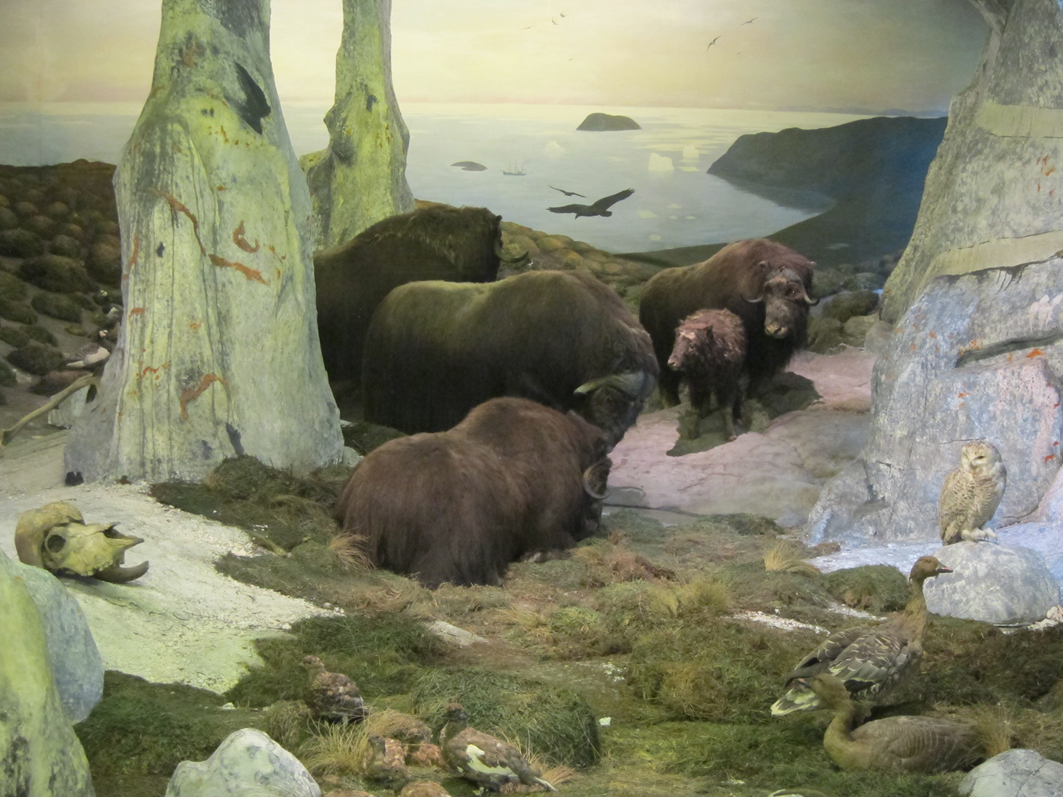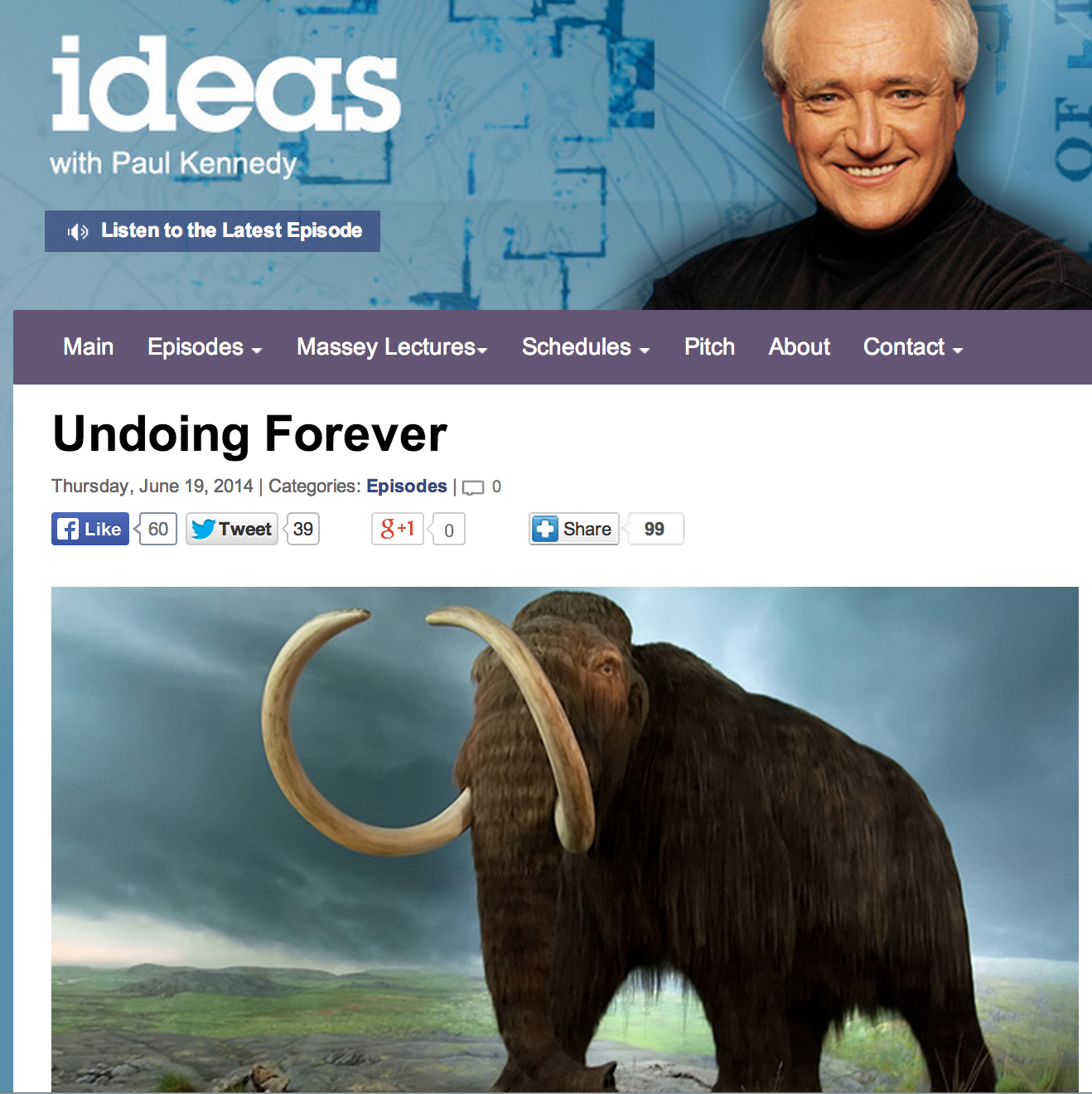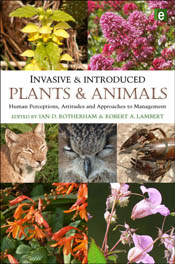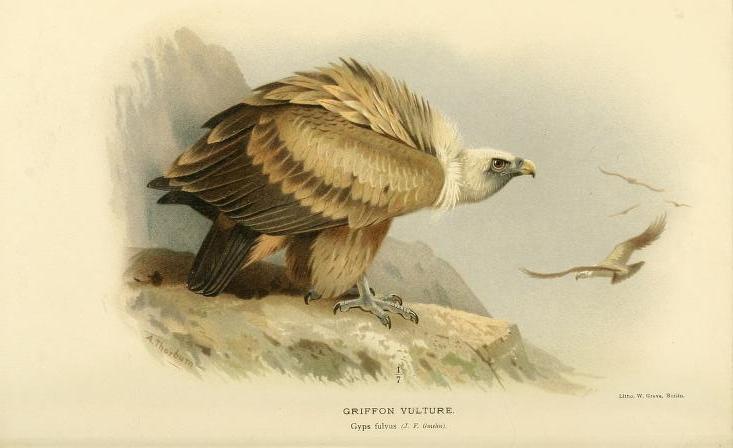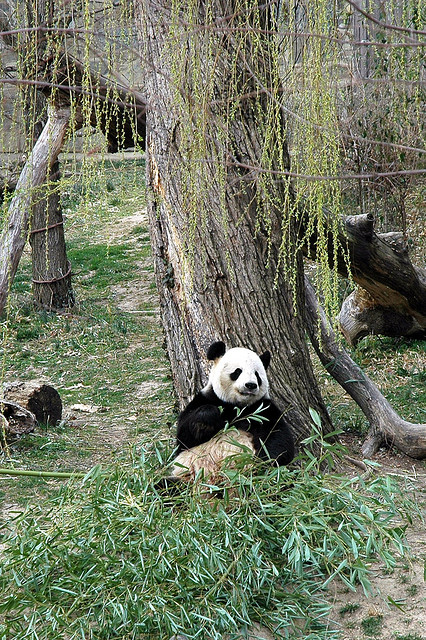
Speaking for the animals
There’s a children’s song “If we could talk to the animals” that asks us to think about how great it would be if we could converse with the non-human world as equals in language:
If I conferred with our furry friends, man to animal,
Think of the amazing repartee
If I could walk with the animals, talk with the animals,
Grunt and squeak and squawk with the animals,
And they could squeak and skwawk and speak and talk to us!
I do indeed wonder what things we might learn if that was an option. We make assumptions about what is best for them, either as individuals or as a species, but we do we really know? What would they say if we asked them?
That’s the question Jane Yeh tackles in the poem “An American panda leaves in the National Zoo” in her collection The Ninjas. I ran across Yeh’s collection because there is a poem about muskox in it, but I’m going to save that for later. Instead, I want to talk about the panda poem that struck me as having an important reintroduction message.
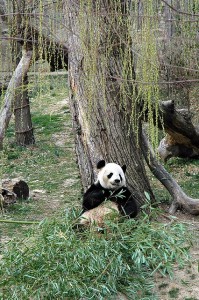
The poem recounts the relocation of the giant panda Tai Shan from the National Zoo in Washington D.C. where he was born in 2006 to the Bifengxia Panda Center in China in February 2010. Tai Shan was born to two pandas “on loan” from the Chinese government to the National Zoo. Part of that agreement stipulates that any cubs will be relocated to China when they turn two years old. In Tai Shan’s case, that deadline was extended because of an earthquake in 2008 that destroyed the Wolong Panda Center. At the end of 2009, the Chinese government said he had to “return”, so passport in paw, he made the journey “home”. He is being placed into the pool of breeding pandas that are being used to build up the panda population for reintroduction projects.
What Yeh does in the poem is imagine this move from Tai Shan’s perspective. Tai Shan, you see, is perfectly happy where he is with a “custom-built grotto,/ My waterfall and my floofy bedding”. This home “where I clambered as a baby” is his. He doesn’t want “to go play / With 150 strange pandas in China!” and wonders “Will they have / Webcams in China? I don’t want to live / Like a wild panda with no one watching.” In Yeh’s poen, Tai Shan is domesticated, not wild, and doesn’t want to change.
This might in fact be exactly the sentiments Idun had when she was taken away from the Myskoxcentrum in Sweden. We think its great because we are helping the muskox herd, but Idun had spent two years of her life, the only two she had, with the Myskoxcentrum herd. She’s now been uprooted, and while she seems to have fit in with the wild herd, it might not be the same to her. We don’t know, because we can’t ask.
Yeh forces us to ask what the animals we move around for reintroduction are thinking: Do they like their current home? Will they miss it? Will they be happier in the new one? In describing the first beaver reintroduction in Sweden, Eric Festin wrote that “the beavers smacked the water with their tail in utter joy” when they were released. Maybe they were just happy to be out of the wooden box they had been stuck in for days! Festin is projecting his own joy onto the beavers, reading their reaction through his own.
Yeh also brings in a discussion of belonging in the poem. Where does this panda belong? In her telling, Tai Shan is “an American panda”, but that is certainly not the opinion of the Chinese government who considers all pandas its property. She also makes Tai Shan sad that “This is the last place / Where people will speak to me in English”–which reminds me of the beaver whisperer who told the beavers their last Norwegian words before release. Was Tai Shan really was an American sent abroad or a Chinese who got to go home? I would probably answer neither as he is a panda and doesn’t care about the silly lines we draw on maps.
“An American panda leaves in the National Zoo” tries to see things from the animal’s point of view, allowing him to speak. By giving the panda a voice–her own–Yeh asks the readers to imagine what it would be like to speak with the animals. But as much as Yeh pretends that the panda’s wants and desires are reflected in her poem, she can’t ask Tai Shan what he thinks. No one can’t talk with him. So instead she is speaking for him, reflecting her own wants and desires, her own opinions. And that is precisely what people involved in reintroduction are doing every time they move animals around: they are acting on their own wants and desires. While those involved in reintroduction may have the species’ or even individual’s best interest in mind, we need to remember that we can’t actually ask the animals what they really want.

